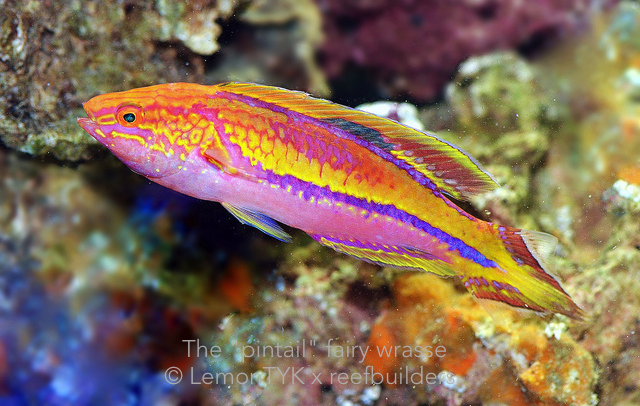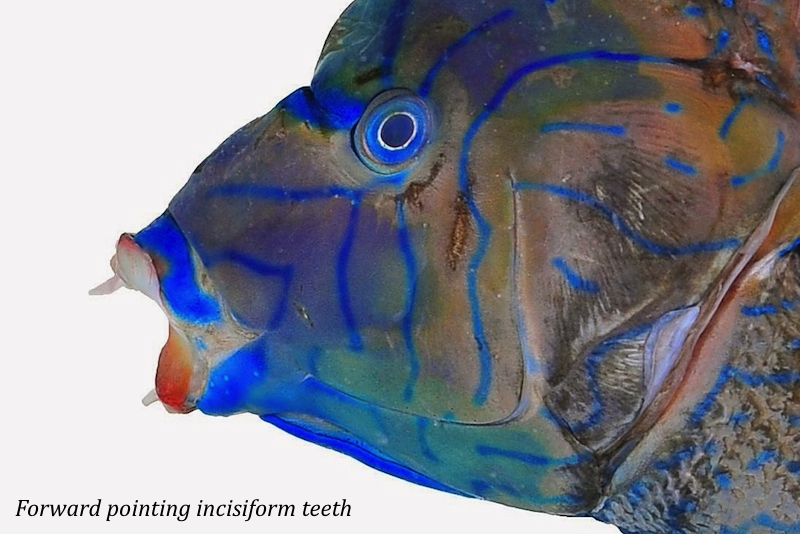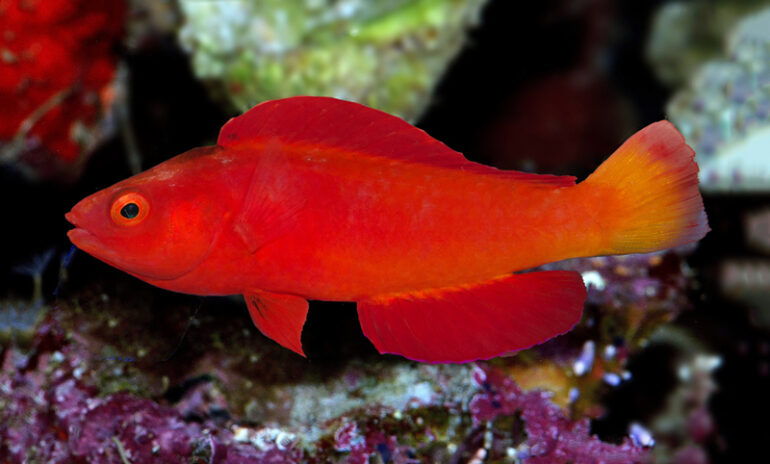Reef Builders has learned that the import of all wrasses into Europe has been restricted. Fish health authorities have confirmed that wrasses and their relatives within the family Labridae are now only allowed to be exported to the European Union from Indonesia and Australia.
The reason for the restrictions is a disease called Viral Hemorrhagic Septicaemia (VHS) which five coldwater wrasse species are believed to have died from in 2012 and are thus susceptible. The result is an EU blanket ban on all 600+ wrasse species unless the country they are coming from can prove that they are VHS-free.
One EU importer found out the hard way recently when a marine fish shipment from the Philipines was stopped because it contained wrasses. Drill down into the detail and there were actually two reasons why they got stopped. One is because there was no paperwork to prove that the country of origin (The Philipines,) is VHS free and the other is down to an oversight on taxonomic rank.

When any fish is shipped into the EU it has to go through a border inspection post at a designated airport with an animal reception center. Fish arrive sealed in boxes with paperwork to say their species, number in the box, and country of origin. Vets then check the paperwork to make sure that those fish are allowed into the country (preventing the introduction of invasive or endangered species,) but also that they are not listed as potential sources of disease. So every fish must travel with a health certificate (a bit like a passport,) and in this case, the fish didn’t have one to say they were free of VHS. So it’s a red light and the fish aren’t allowed in. Airport vets have a job to do and in this case, they did the right thing.
But then look at the legislation that the vet had to deal with and the taxonomy of susceptible “species” is all over the place. In the case of VHS, well-known species such as Atlantic Cod, Sprats, Pike, and Rainbow Trout are listed to species level, whereas Herrings are listed at generic level, Clupea spp, and wrasses ascend to family level with the whole of Labridae spp. large or small, coldwater or tropical, wrasse, hogfish, or parrotfish, Atlantic, Pacific, or from any other ocean around the world. Unless the all-important health cert declaring the country of origin is provided, which supersedes it.
We spoke to a British importer who looked at the particular case and they pointed out the Labridae spp. designation as being the problem. “Vets don’t like spp.” he told Reef Builders. They need a full scientific name to work with. A health cert will state a commodity code relating to marine or freshwater, fish or crustacean, etc, and the attached annex will have paragraphs ticked or crossed out relating to diseases. But it’s vague on marine.”

VHS not viable
“Since the implementation of the new legislation, I have been working with various parties and OFI to get this thing sorted,” Said Dutch marine livestock import Arie De Jong of Dejong Marinelife. “ The thing is that VHS is not viable and capable of reproduction when it enters saltwater that is above 18-20 degrees Celsius. So with this official statement that is covered by various research documents, we hope to get this solved very soon. At least with a possible extra addition to the legislation that our ornamental tropical marine species are allowed to be imported. No matter from which country (as right now there are certain countries which we are allowed to import them from).”
According to Ornamental Fish International (OFI,) The European Union, collectively, is the largest market for ornamental fish in the world, however, the United States is the single largest importing country. Work now needs to be done on whether all Labridae spp. are potential VHS carriers (temperature data suggests not for tropical species,) at the same time as major wrasse exporting countries working hard on health declarations to declare them VHS free. If the former can be scientifically proved, one should naturally follow the other for all countries exporting from tropical oceans. And then the VHS Labridae spp. catch-all can be further defined and clarified.

Viral hemorrhagic septicemia (VHS) is a deadly infectious fish disease caused by the Viral hemorrhagic septicemia virus. It afflicts over 50 species of freshwater and marine fish in several parts of the Northern Hemisphere. Different strains of the virus occur in different regions and affect different species. Historically, VHS is a disease of farmed rainbow trout (Oncorhynchus mykiss) in fresh water in continental Europe, hence the EU’s concern.
The five coldwater wrasse species which include the Ballan wrasse, Labrus bergylta, are commonly used for biological parasite control of Sea Lice in Atlantic Salmon aquaculture facilities. In 2012 the five coldwater wrasse species experienced a mortality event in a pen at a site in Shetland, Scotland with diagnostic testing confirming VHS. Since Brexit, the UK is no longer part of the EU and is now officially certified VHS-free. CEFAS has confirmed the movement of Labridae spp. from the UK to the EU can go ahead as normal.



